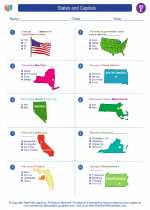Soil
Soil is a complex mixture of minerals, organic matter, water, and air that forms the top layer of the Earth's surface. It is a vital natural resource that supports plant growth and provides a habitat for a variety of organisms.
Composition of Soil
Soil is composed of various materials, including:
- Minerals: such as sand, silt, and clay, which provide the basic structure of the soil.
- Organic matter: such as decomposed plant and animal material, which adds nutrients to the soil.
- Water: which fills the spaces between soil particles and is essential for plant growth.
- Air: which occupies the pore spaces in the soil and is necessary for the respiration of plant roots and soil organisms.
Functions of Soil
Soil performs several important functions:
- Supporting plant growth: Soil provides anchorage and essential nutrients for plants to grow.
- Filtering and purifying water: Soil acts as a natural filter, removing pollutants and impurities from water as it percolates through the soil.
- Regulating water flow: Soil helps to regulate the flow of water, preventing erosion and controlling the movement of groundwater.
- Providing habitat: Soil is home to a wide variety of organisms, including earthworms, insects, and microorganisms.
Types of Soil
Soil can be classified into different types based on factors such as texture, composition, and color. Some common soil types include:
- Clay soil: Heavy and dense soil with tiny particles that hold water well but can be slow to drain.
- Sandy soil: Light and gritty soil with larger particles that drains quickly but may not retain nutrients well.
- Loamy soil: A balanced soil type that contains a mixture of sand, silt, and clay, providing good drainage and nutrient retention.
Soil Conservation
Soil conservation is the practice of protecting and managing soil to prevent erosion and degradation. Methods of soil conservation include:
- Contour plowing: Plowing fields along the contour of the land to reduce water runoff and soil erosion.
- Terracing: Creating level platforms on steep slopes to minimize erosion and retain soil moisture.
- Cover cropping: Planting specific crops to cover and protect the soil during periods when the main crop is not growing.
Study Guide
Here are some key points to remember about soil:
- What are the main components of soil?
- What functions does soil perform?
- How is soil classified into different types?
- What are some methods of soil conservation?
Understanding the composition, functions, types, and conservation of soil is essential for grasping its importance as a natural resource and the role it plays in supporting life on Earth.
[Soil] Related Worksheets and Study Guides:
.◂Social Studies Worksheets and Study Guides Fifth Grade. States and Capitals

 Worksheet/Answer key
Worksheet/Answer key
 Worksheet/Answer key
Worksheet/Answer key
 Worksheet/Answer key
Worksheet/Answer key
